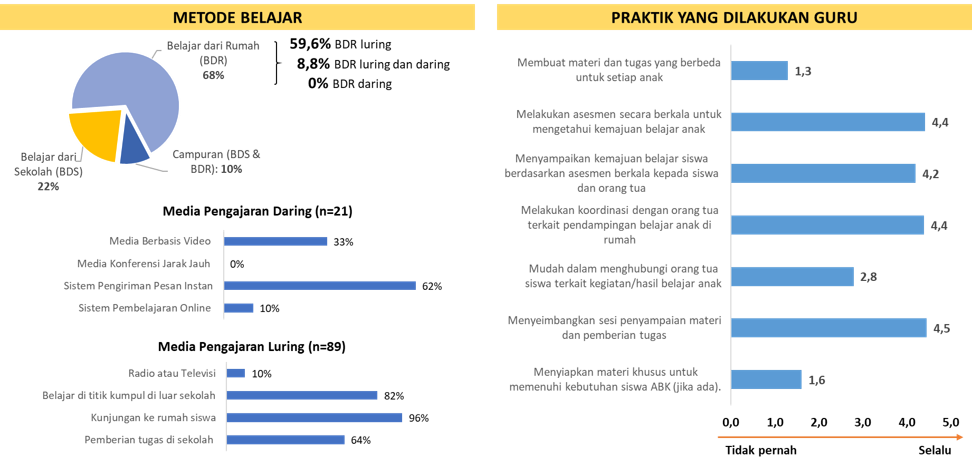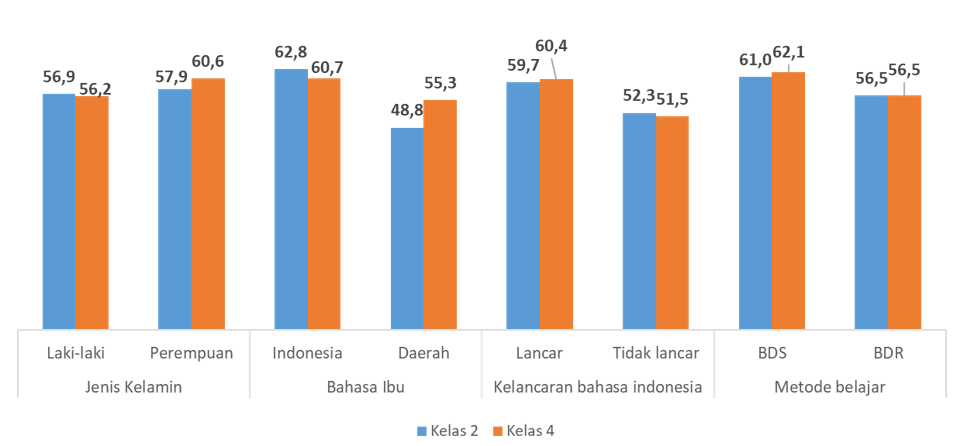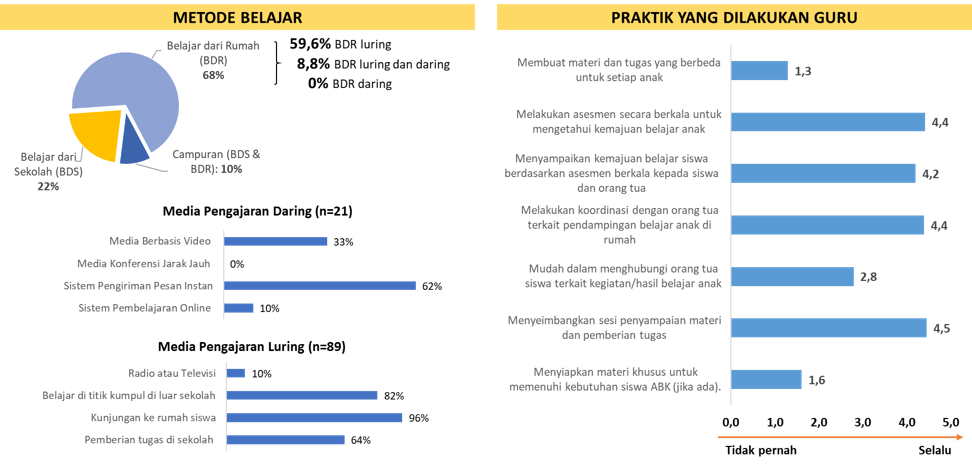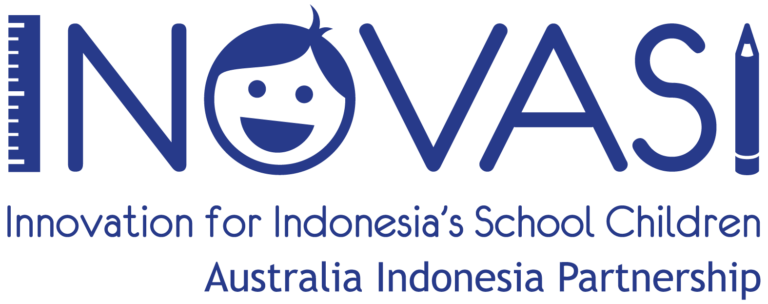
As an effort to overcome the challenges of learning during the COVID-19 pandemic, the Government of Nagekeo district understands the need for data that relates to the quality and access of education. Through this data collection, the Education and Culture Office hopes to see lessons learned and learning outcomes during the COVID-19 pandemic that can be used as a reference in planning relevant program development strategies in 2021 and in the recovery phase. The Nagekeo district was the fifth regency in NTT to join as INOVASI’s partner in early 2020. INOVASI welcomes Nagekeo’s request by providing technical support to equip enumerators and support related to the system for collecting, processing, and analyzing data from the initial mapping.
The instrument used to collect the situation analysis data adopts the INOVASI Student Learning Assessment and the Indonesian Student Competency Assessment (Asesmen Kompetensi Siswa Indonesia, or AKSI) by the Center of Assessment and Learning (Pusat Asesmen dan Pembelajaran, or Pusmenjar), Research and Development Agency (Badan Penelitian dan Pengembangan, or Balitbang) of the Ministry of Education and Culture. The survey was conducted to measure students’ basic and comprehensive literacy and numeracy skills, identify students’ backgrounds and learning facilities, capture students’ perceptions and motivations as well as conduct interviews in order to see teacher demographics and teaching practices carried out during the pandemic.
Equipping the 30 enumerators was carried out in a hybrid manner and took two days. The training materials included understanding the instruments to be used, procedures on how to interact with students, data collection using the SurveyCTO application, and preparation and health protocols during data collection in the field.
Collecting data from resource persons was done online via Zoom for two weeks in December 2020. The sample consisted of students from grades two and four based on the Minimum Competency Assessment (Asesmen Kompetensi Minimum, or AKM) framework. Data from 1,047 students and 144 teachers from 57 randomly selected elementary schools in seven subdistricts were successfully collected. INOVASI processed and analyzed the collected data. The results of the analysis were discussed with the Education and Culture Office in January 2021.
The results of the situation analysis show that the ability of early grade students in reading and basic arithmetic is quite good, but it is not good enough in terms of their ability to understand more comprehensively. Female students, students whose mother tongue is Indonesian, students perceived by teachers as fluent in Indonesian, and students who study by using the Learning at School (Belajar di Sekolah, or BDS) method generally showed higher literacy and numeracy scores.
 Figure 1. The Learning Outcomes of Nagekeo Students: Literacy Comprehension (Based on Grades).
Figure 1. The Learning Outcomes of Nagekeo Students: Literacy Comprehension (Based on Grades).
This analysis also looks at the description of the learning process and its obstacles during the pandemic. The most widely used learning method is Learning from Home (Belajar dari Rumah, or BDR) at 68 percent, which is conducted offline with the following mechanisms: visits to student homes, learning at meeting points, giving assignments at school, and a small portion of learning through radio or television. The findings show that students have limited learning facilities. As many as six out of ten teachers have facilities to support distance learning activities, such as mobile phones, laptops, and adequate internet connections, but this is not the case with most students (only three out of ten are equipped).
This finding is in line with the teachers’ perceptions that parents still have limitations in providing adequate tools to support their children’s learning. Meanwhile, teachers still experience barriers when communicating with parents. The 2013 curriculum and the K-13 book are still the main choices that teachers use for learning during the pandemic. In addition, the practice of inclusion in teaching is limited, especially for children with special needs.
 Figure 2. Teaching Practices in Nagekeo District.
Figure 2. Teaching Practices in Nagekeo District.
Having seen the overview of these findings, the Government of Nagekeo District designed activities to strengthen teacher capacity, especially in areas that are less than optimal. Supervisors focused on assisting their target schools to provide additional interventions with literacy learning strategies for early grade students. The specific focus was on strengthening the literacy skills of first grade students enrolled in the 2020/2021 school year. The results of this situational analysis are important material for the process of revising the Regional Medium-Term Development Plan (Rencana Pembangunan Jangka Menengah Daerah, or RPJMD) at the district level.
Nagekeo adopted the method for implementing a basic literacy program, which is based on the Teacher Working Group (Kelompok Kerja Guru, or KKG) in 50 elementary schools in order to develop the quality of education and training programs for teachers and education personnel.






